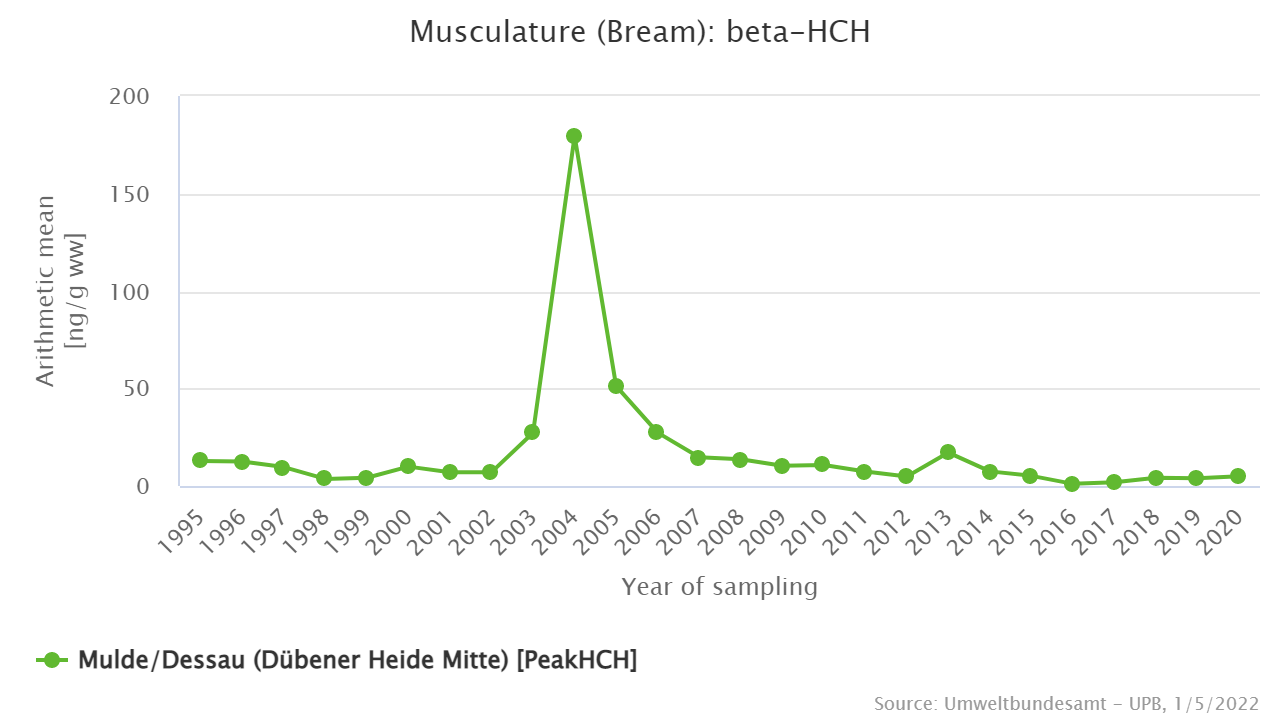beta-HCH in bream from the river Mulde
Peak contamination after Elbe flood of 2002
beta-HCH is a by-product in the production of the insecticide lindane (gamma-HCH). It is very persistent and has a high potential for bioaccumulation and biomagnification. In the past beta-HCH was often disposed in an environmentally inadequate way on dumping grounds. This is probably the reason for soil contaminations near the main lindane-production site of the former German Democratic Republic (GDR) at Bitterfeld.
It is assumed that during earthworks and dike reconstructions following the Elbe flood of 2002, high quantities of beta-HCH were released from soils and dumping grounds around Bitterfeld and entered the river Mulde. The increasing Mulde-contamination is reflected in elevated levels of beta-HCH in bream since 2003 with peak concentrations in 2004.

Updated at: 2022-01-05
Recommended profiles
Specimen
-
Bioindicator in rivers and lakes
Analytes
-
Several isomeric compounds among the group of chlorinated hydrocarbons
Sampling area
-
Region in the chemical triangle of Central Germany